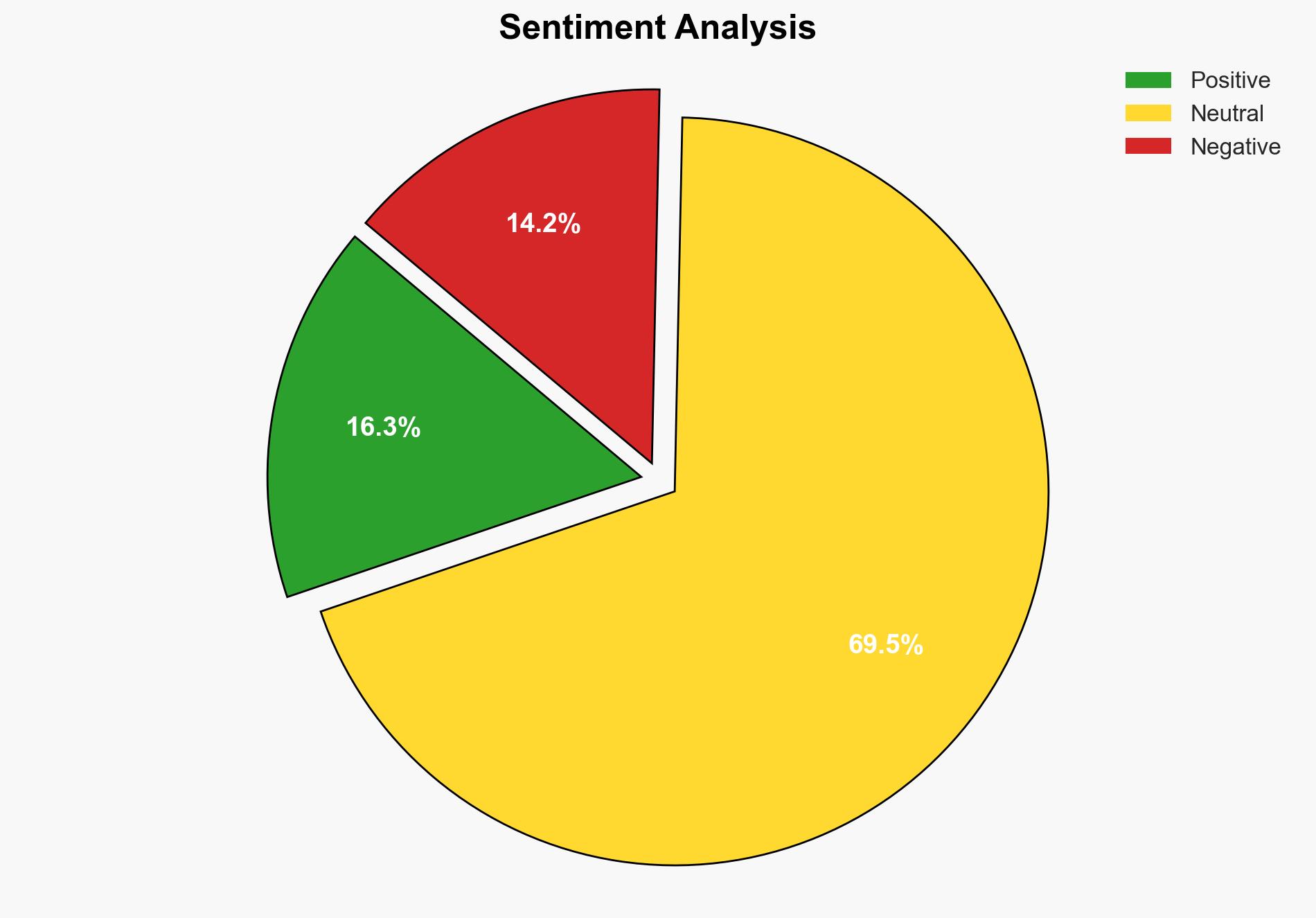Israel’s bold new defense policy Will buffer zones bring security or more conflict – The Jerusalem Post
Published on: 2025-03-02
Intelligence Report: Israel’s Bold New Defense Policy – Will Buffer Zones Bring Security or More Conflict?
1. BLUF (Bottom Line Up Front)
Israel’s new defense policy aims to establish buffer zones along its borders with Lebanon, Syria, and Gaza to mitigate threats from extremist organizations and regional instability. The policy’s success hinges on its ability to prevent the entrenchment of hostile forces without creating power vacuums that could be exploited by adversaries. Strategic collaboration with regional allies and continuous monitoring of the situation are crucial for maintaining security and stability.
2. Detailed Analysis
The following structured analytic techniques have been applied for this analysis:
Scenario Analysis
The establishment of buffer zones could lead to several scenarios:
- Stabilization Scenario: Buffer zones successfully deter extremist activities, leading to enhanced security and regional stability.
- Escalation Scenario: Buffer zones provoke increased aggression from hostile entities, resulting in heightened conflict.
- Stalemate Scenario: Buffer zones maintain the status quo without significant improvement or deterioration in security.
Key Assumptions Check
Key assumptions include:
- Buffer zones will effectively deter hostile activities.
- Regional allies will support Israel’s security initiatives.
- Hostile entities lack the capability to significantly challenge the buffer zones.
These assumptions should be continuously evaluated to ensure they remain valid.
Indicators Development
Indicators to monitor include:
- Increased military activity near buffer zones.
- Political shifts in neighboring countries that could affect regional alliances.
- Emergence of new extremist groups exploiting power vacuums.
3. Implications and Strategic Risks
The implementation of buffer zones presents several risks:
- Security Risk: Potential escalation of conflict if buffer zones are perceived as aggressive.
- Regional Instability: Power vacuums could lead to increased influence of hostile entities like Iran and Hezbollah.
- Economic Impact: Prolonged conflict could disrupt trade and economic activities in the region.
4. Recommendations and Outlook
Recommendations:
- Enhance intelligence sharing with regional allies to monitor and respond to threats effectively.
- Invest in technological advancements to improve surveillance and defense capabilities along buffer zones.
- Engage in diplomatic efforts to strengthen regional alliances and deter adversarial actions.
Outlook:
Best-Case Scenario: Buffer zones lead to long-term stability and reduced threats, fostering regional cooperation.
Worst-Case Scenario: Buffer zones become flashpoints for conflict, exacerbating regional tensions.
Most Likely Scenario: Buffer zones provide a temporary deterrent, requiring ongoing adjustments and strategic oversight.
5. Key Individuals and Entities
The report mentions significant individuals and organizations:
- Israel Katz
- Regional Council
- IDF Commander
- Hamas
- Hezbollah
- Druze Community
- Iran




